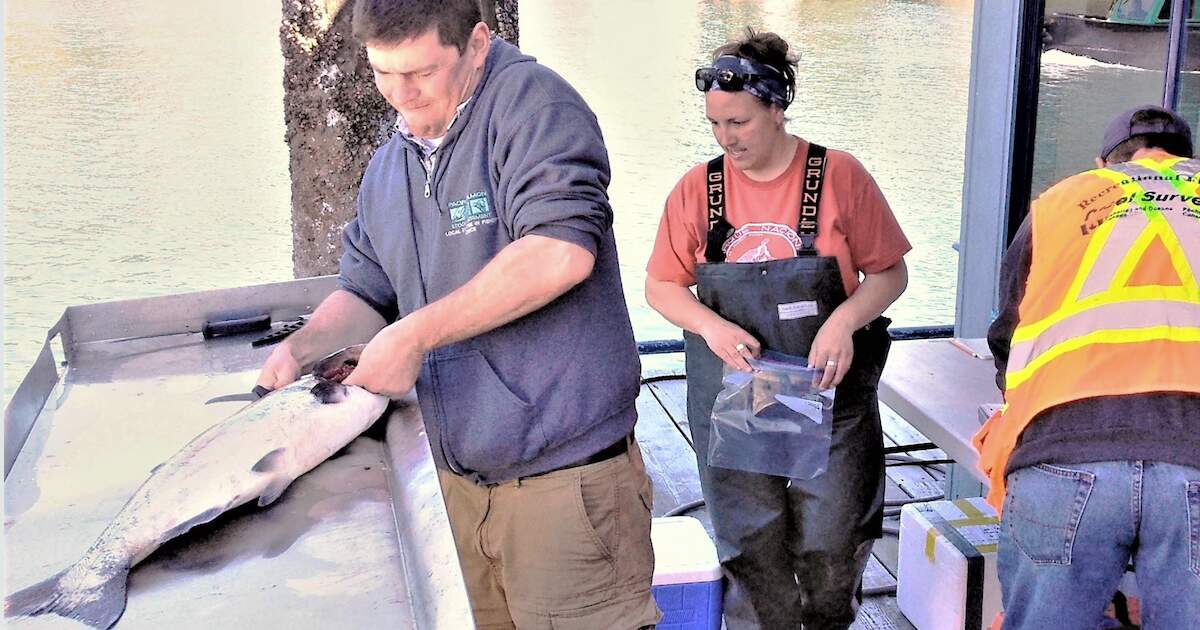
“Who cares if a small local fishing club cancels a salmon fishing event?”
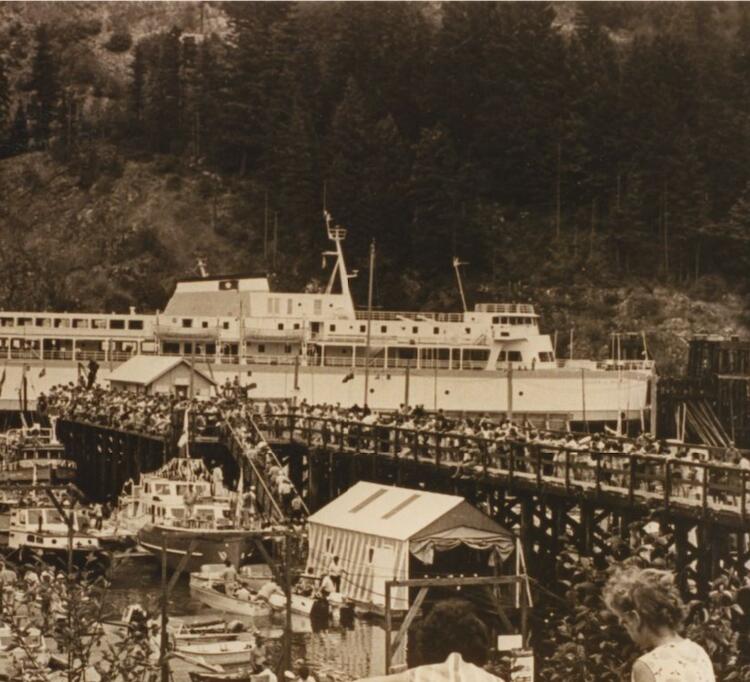
Photo taken in 1980 looking out from the grass over Horseshoe Bay during the Sun Free Salmon Derby in 1980. The image shows crowds of people along the government wharf and on Sewell’s Landing docks as well as a ferry at Horseshoe Bay
It’s just a bunch of anglers killing salmon in order to win prizes and money. Unfortunately that’s a sentiment that’s gained traction with special interest groups, and even some of the public, who don’t like or understand recreational angling. That sentiment grew out of old style derbies like the one sponsored by the Vancouver Sun newspaper. 1984 was its last year and over 7,000 anglers entered what was called the world’s largest free fishing derby.
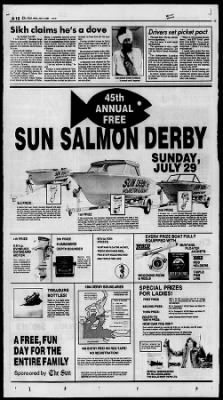
The Vancouver Sun, Monday, July 9, 1984
Fortunately that derby format is dead because it put unsustainable fishing pressure on local salmon stocks. These events existed in an era of high harvest rates, less reliable data, and anglers who didn’t know that salmon stocks were in trouble. And why should they? The federal government was still engaged in a salmon war with US salmon. It was meant to pressure American negotiators into signing a Salmon Treaty. However the strategy also put heavy pressure on intermingling Canadian stocks with predictably damaging outcomes. Today’s events are different. The focus is on fundraising for salmon restoration and enhancement. Catching and even keeping a salmon to produce more salmon appears counter-intuitive; but it works and is an important story that’s been poorly explained to the non-angling public.
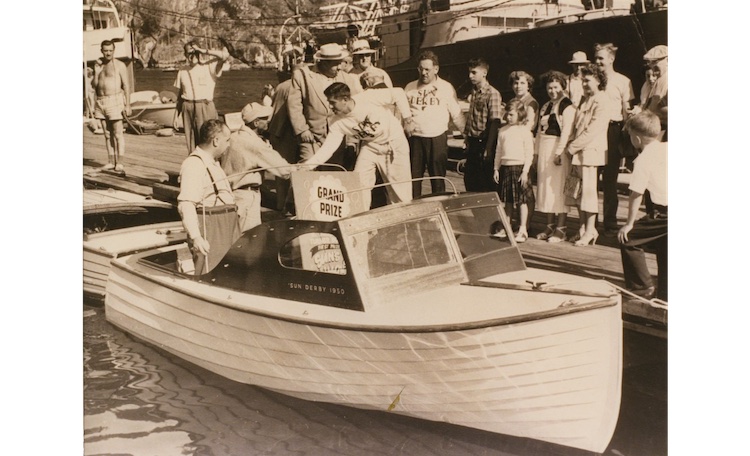
Sun Derby 1950
The shift away from rewarding anglers with the biggest or the most fish began in the late 1980’s when it became apparent that overfishing existed. One of the catalysts for this change was the Public Involvement component of the Salmonid Enhancement Program (SEP). This was the brainchild of one of Canada’s most visionary Ministers of Fisheries, Romeo LeBlanc. The Public Involvement Program (PIP) allowed ordinary citizens to take a leading role in rebuilding salmon stocks. The uptake by the public was immediate. The same enthusiasm exists today, although sadly the Federal government has underfunded it for decades.
The Sidney Anglers Association
The Sidney Anglers (SAA) formed in May 1977 with thirty members. Parts of their mission statement matched the growing sentiment for helping salmon. It was expressed this way: ” To support the propagation and conservation of salmon and the protection of their environment.”
The first club derby was held in June 1977. In those days their derbies were enjoyable outings that promoted fishing in the Sidney area while educating novice anglers about salmon fishing.
The club’s salmon restoration activities began after joining the Amalgamated Conservation Society. This umbrella group advocated for the regions angling organizations while providing volunteers to work on the Goldstream River and later in the Howard English Hatchery.
In 1981 the SAA brought their salmon enhancement activities closer to home. Commercial fisherman Stan Levar approached the executive with an idea for restoring sea run cutthroat to Reay Creek. This was a barren and degraded stream that flowed from the Victoria International Airport into Bazan Bay. The club agreed with Stan, and approached the Province for permission, which was unfortunately denied. However the Department of Fisheries and Oceans (DFO) approved a subsequent application to introduce Coho salmon through PIP.
Over the next fifteen years nearly all the association’s work and considerable club monies were directed towards restoring Reay Creek. Additional physical and financial help came from the Town of Sidney, the Victoria Airport Authority, Fisheries Renewal BC and the Pacific Salmon Foundation. These efforts have resulted in three decades of coho escapements ranging from a few dozen to nearly a hundred a year, while the restored habitat enticed sea run cutthroat to re-colonize the creek.
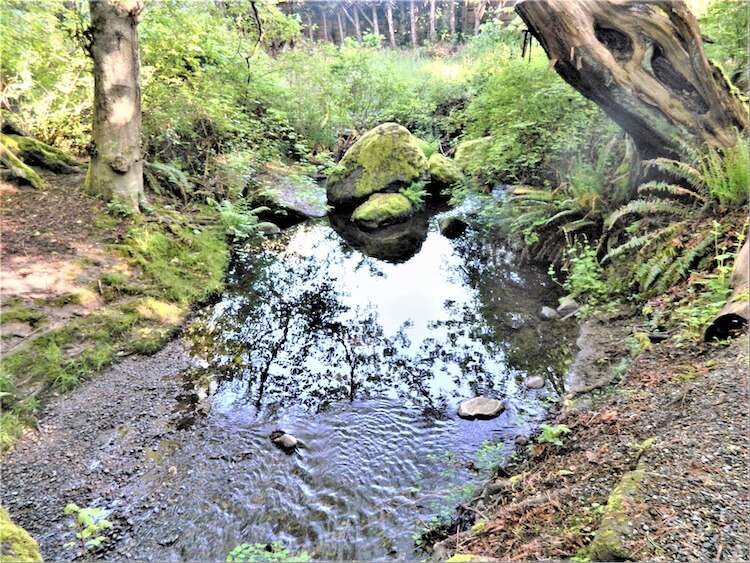
Reay Creek restored
In 2001 the Sidney Anglers partnered with a newly formed group called Peninsula Streams. This introduced them to broader regional salmon needs prompting a significant uptick in volunteer commitments, and funding requirements of which salmon derby funding played a critical role in satisfying.
Sidney Anglers Fundraising Since 2001 & the Law of Unintended Consequences
This is where community based fishing derbies, volunteerism and salmon restoration intersect; and why cancelling derbies produces unintended consequences for the future of locally funded salmon restoration work.
Fundraising from derbies between 2000 and 2011 was modest but still important. The major source came from the Port Sidney Marina Derby. This arrangement continued through 2012 when marina ownership cancelled the Derby. In the last year of this cooperative venture SAA’s share of proceeds was about $4,000, with additional money going to other groups within the region. In 2012 the anglers started their Annual Salmon Enhancement Derby. In the first eight years it generated a remarkable $180,000 in proceeds for salmon restoration and scientific work. The anglers also continued to contribute about 300 volunteer hours a year towards local projects.
Derby Funding Recipient List (Source-SAA Executive)
- Cowichan Estuary & Restoration Society
- Sea Change Society
- Reay Creek
- Howard English Hatchery
- Cowichan Lake Salmon Enhancement Society
- Sidney Anglers & BC Wildlife Federation joint project
- Mill Bay District Conservation Society
- Cowichan Lake Tributaries Chinook Enhancement
- Peninsula Streams
- Sooke Watershed Enhancement
- Sooke Salmon Enhancement
- Craigflower Creek Restoration
- Nile Creek Restoration
- Shawnigan Creek Salmon Enhancement
- UBC & UVIC science & education
- Nanaimo Hatchery
- Conuma Hatchery
- Nootka Sound Watershed Society
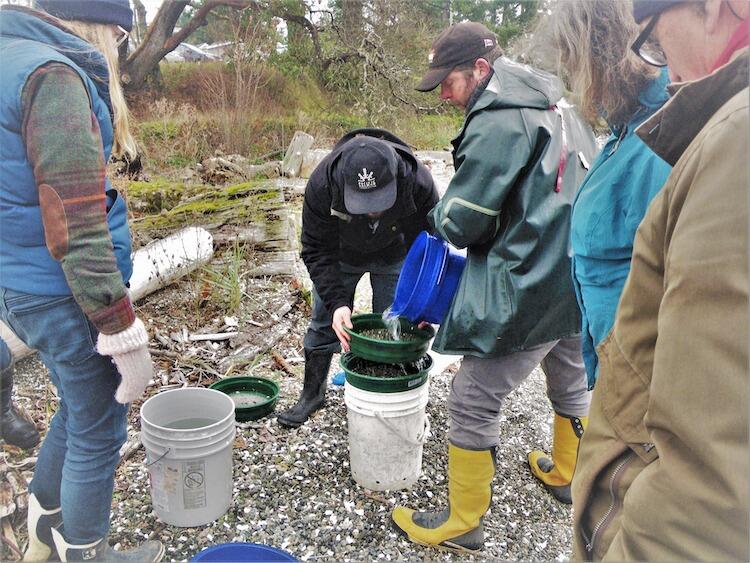
Beach Assessment Pen Stream

SAA President Grant MacPherson collecting data on Coho smolts
The total value of derby funding should be expanded to include the value of volunteer labour, leveraged funding, educational benefits and scientific research. The Sidney Anglers derby is not unique, but representative of fundraising fishing events that occur annually along the BC coast.
The Problem
2020 was the second year their derby has been cancelled.
The Reason
The law of unintended consequences caused by poorly thought out Chinook non-retention regulations.
The SAA is looking for alternative funding options, but one thing is certain. It looks like a big chunk of cash for salmon projects has been lost in 2020, just from this group. Club president Grant MacPherson sums up the situation this way: “Last year’s political decisions have severely undermined community goals and actions and have perpetuated mistrust in government”.
Update February 2021
MacPherson’s comments were prophetic. Even though this angling association tried to raise funds from alternative sources, like an auction which was cancelled because of COVID concerns, their efforts were largely unsuccessful. Some increased revenue came through negotiating a new agreement with the Town of Sidney for the operation of the Tulista Park boat ramp, but that increase barely put a dent in the losses from cancelling the Salmon Enhancement Derby.
It’s been a bitter financial pill but arguably justified had the region contained a large number of Fraser River Chinook stocks of concern. But here’s the rub—a significant proportion of the Sidney Anglers fishing boundaries fell within a larger fishing region that the Sport Fishing Advisory Board, working with Fisheries and Oceans, had identified as safe for Chinook salmon retention. This was because there was zero evidence of any catches of Chinook stocks of concern. This conclusion was based on decades of coded wire tag recoveries.
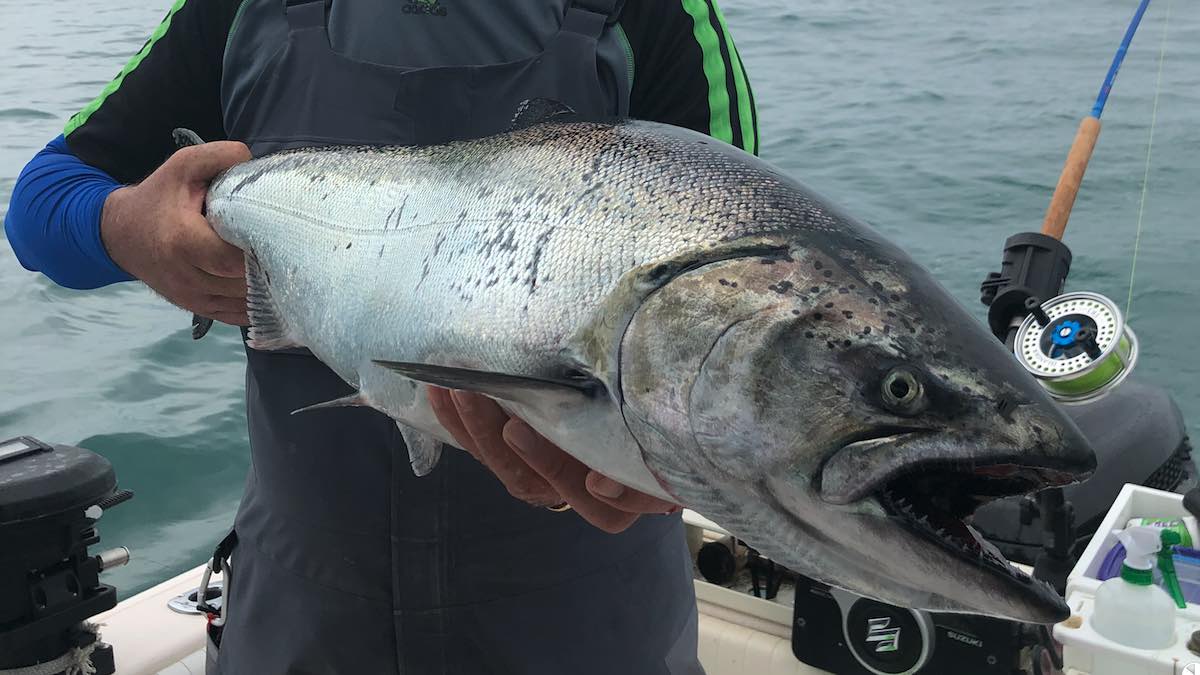
Hatchery Chinook
This area was part of a comprehensive package of recommendations that went forward to the Minister for managing the 2020 public Chinook fishery. The Minister of Fisheries rejected the plan, only allowing some minor modifications later in the year that did not include the Sidney area. The anglers’ big concern will be whether the same regulations will carry forward into 2021. This will result in the additional loss of thousands of dollars that would have been directed to helping local salmon runs, unless senior Fisheries staff and Fisheries Minister Jordan reassess their Chinook-non-retention position.
Visit the Store
$34.99
$34.99
Featured Catch

Joel Unickow halibut (Photo: Rob Frawley Lucky Strike Sportfishing Tofino)







